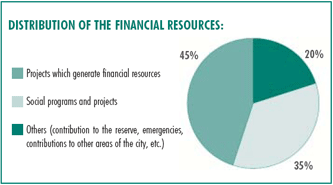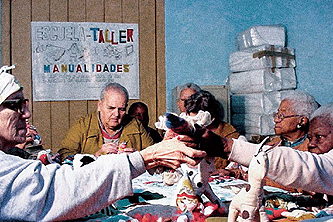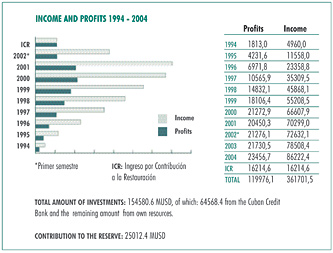The recovery of historical centres and their integrated development
Results
The tapping of cultural, tourism and tertiary resources in the territory has produced 160 million USD in earnings in eleven years. 16,2 million USD have been collected through application of the Restoration Tax (ICR). Economic decentralization has allowed for the immediate reinvestment of these resources in a cash flow concept. This has meant obtaining very visible results in the short term, demonstrated by urban and social renewal and a consequent generation of positive outcomes that attract more investment and interest, increasing considerably the number of visitors and people requiring services. The trustworthiness of the process itself led the National Bank to provide almost 65 million USD in credits aimed at the high-cost works, and the State to provide about 465 million pesos in local currency from the central budget.
The application of socially beneficial policies, with 35 percent of resources budgeted for social works such as housing, health and education, has mobilized over 16 million USD in international cooperation since 1994.
During the process 10 250 direct jobs have been created, 60 percent of which have been filled by residents of Old Havana or nearby municipalities and 34 percent by women, who hold 59 percent of the technical positions. It is estimated that about 2 000 indirect jobs have been created, associated mainly with restoration of the buildings, providing services and reviving handcraft activities and production Many buildings with social uses have been rehabilitated, mainly for strengthening the Municipal Administration’s education and health sectors.
Novel experiences in the education sector have also emerged, including “the classroom in the museum”, providing children with space inside the institutions where they can have their classes and other cultural alternatives while their school is being repaired. A mother-infant home was created, along with a rehabilitation centre for children and a geriatric centre, while general practitioner’s offices were equipped and more than a dozen scholastic centres were rehabilitated. Cultural activity has been intensified with service in more than thirty installations including museums, museum houses, galleries, concert halls, fourteen specialized libraries and centres for children and young people, playground, aquarium and game centres, among others. Work is also being done on restoring housing of social importance, with a total of six programmes that have provided benefits of various kinds to a large number of residents.
The average number of specialized cultural activities during a year is 800 concerts with 70.000 attendees, 296 conferences, 45 courses aimed at young people and children, 50 films screened, 2.000 exhibitions enjoyed by 170.000 visitors, 6.000 hours of radio transmission, a weekly half-hour television programme and four issues of the Opus Habana periodical, among other initiatives.
This policy of creating jobs, supporting parts of the municipal administration, joined to a programme providing specialized attention to vulnerable groups and a quality cultural and recreational programme, testify to the project’s social vocation. They constitute an example of how business criteria applied to the tourism industry and the tertiary sector are not at odds with sustainable human development, given that when the starting point is the application of public policies of social justice, very encouraging results can be achieved.
DOWNLOAD THE BROCHURE PDF
albanian (0.8 MB)english (0.9 MB)
spanish (0.9 MB)
ONLY TEXT
•Adopting the office’s methodology in other countries








 COUNTRY OF ORIGIN
COUNTRY OF ORIGIN